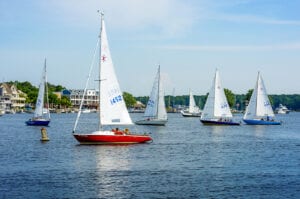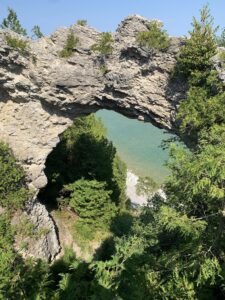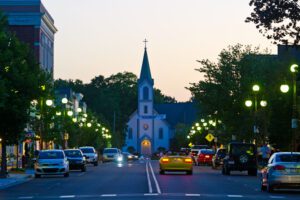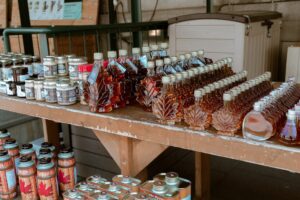Photo by the Mackinaw Area Visitors Bureau
Whether it is spelled Mackinaw as in Mackinaw City or Mackinac as in Mackinac Island, they are pronounced the same way: Mack-i-naw. Why? It is because of the area’s rich history with the Native Americans, French, and British.
The area was named Michilimackinac by the Native Americans and when the French built a fort here in 1715, they recorded the name with a “c” on the end as a French word with an “aw” sound would be pronounced. Many guests to the area mispronounce Mackinac by saying “Mack-i-nack.” The “c” on the end of this word is instead pronounced as “aw.”
The word became shortened to Mackinac. The fort was moved on the winter ice to the island across the straits which became known as Mackinac Island.
Edgar Conkling was the founder of the city in 1857 and he changed the name to Mackinaw to reflect how the word actually sounds. Thus, in this part of Michigan, there is Mackinac Island, the Mackinac Bridge, the Straits of Mackinac, Mackinaw City, and the Icebreaker Mackinaw and they are all pronounced the same way: Mack-i-naw. There is no Nack in Mackinaw or “aw”! Pronounce it Mack-i-knack and you’ll give yourself away as a tourist who doesn’t know how to pronounce the place that you’re visiting…..

Sailing is a special pastime that often brings friends together in Northern Michigan. And no wonder. The sailing here is wonderful.

Acres and acres of Northern Michigan are abloom with trillium during May, only adding to the beauty of spring Up North!

Arch Rock is a geologic wonder on Mackinac Island and stands 146′ over the Lake Huron shoreline- nearly 15 stories tall.

Harbor Springs, Michigan has a vibrant, beautiful downtown business district complete with a beach, waterfront, shopping, dining, parks, and more!

Spring brings lots of outdoor activities to Northern Michigan but one often ends up on pancakes: making maple syrup.

A visit to Northern Michigan is not complete without a walk along the Lake Michigan in search of Petoskey stones.